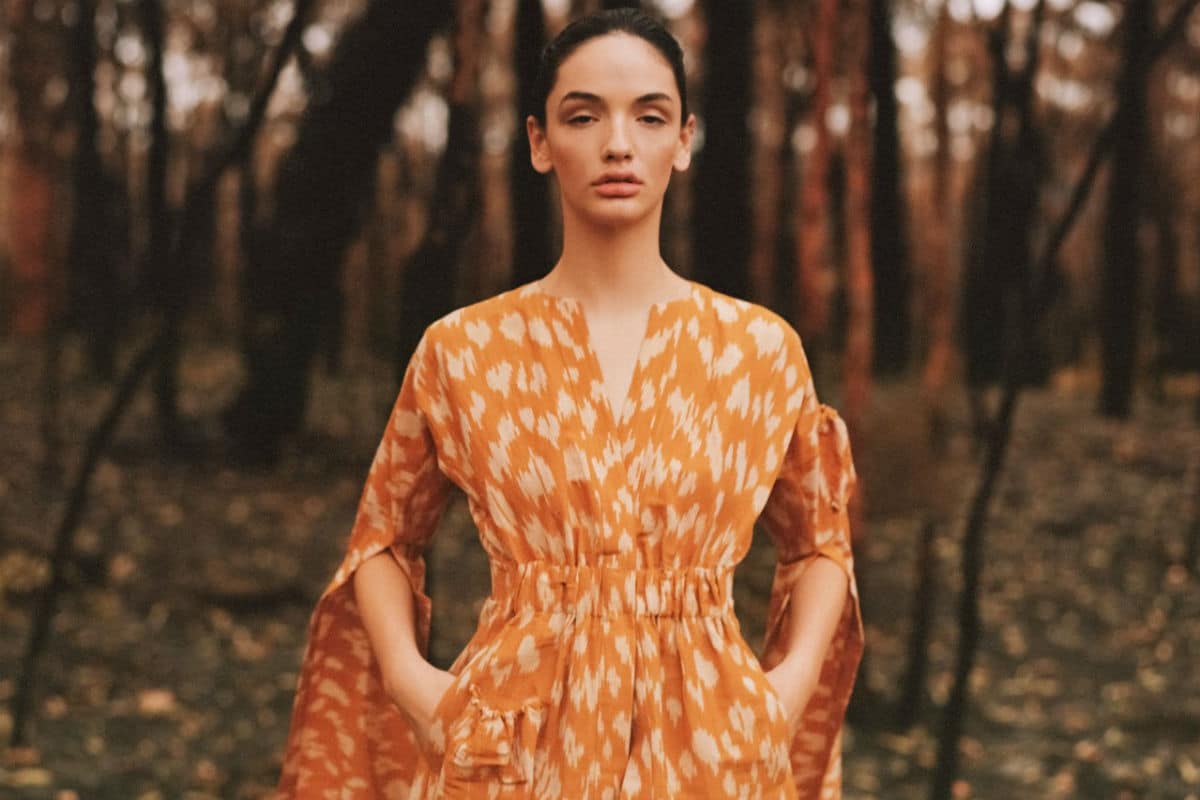
Today June 5, is the United Nation’s World Environment Day. To highlight the important issues our world faces, we chat with local Australian designer and eco-warrior Kit Willow on the next phase for the industry, people and the planet. With the release of her latest KITX collection Regeneration, Willow also shares inspiring notes and highlights of her sustainable practices and her love for finding innovative ways to turn waste into future materials. It’s time to regenerate.
Tell us about your latest Collection No. 16 ‘Regeneration’…
KITX’s latest No. 16 REGENERATION Collection came about from the idea that we no longer can sustain - sustain these unprecedented levels of carbon in the atmosphere? Sustain the drought in parts of Australia? Sustain the threat of devastating bushfires? Sustain the loss of one billion animals in three months? Sustain the ice caps melting and sea levels rising? Sustain the increasing acidity into the ocean due to carbon absorption? Sustain the demise of the Great Barrier Reef? Sustain the breakdown of our eco-systems and loss of biodiversity? Sustain the obliteration of the bee population globally? Sustain the loss of forests? SUSTAIN?
No.
We need to regenerate - regenerate the soil, regenerate the forests protecting species habitat, regenerate rivers and oceans, protect clean water and marine life habitats, regenerate the atmosphere to reverse the levels of carbon dioxide, slow down the heating of the earth, slow down the rate of ice caps melting and reduce the sea levels rising, regenerate the diversity of flora allowing bees and insects to do their job, regenerate marine life and the Great Barrier Reef, regenerate waste into future materials reducing land fill and plastic pollution – REGENERATE!
The No. 16 Collection celebrates the regeneration of nature with botanical images of flowers printed on to blouses, skirts and dresses, and the use of future materials like hemp and the regeneration of plastic waste from the ocean is integrated into textiles.
What are some of the key highlights of the collection?
Hemp shirt dresses – crafted with 100% hemp and finished with Corozo nut buttons. The carbon capturing Belgian hemp is naturally resistant to pests and grows with very little water and no chemicals - the fibre used in its least processed state.
The Regeneration flower series delivers a silk story across blouses, skirts, dresses and tops crafted with 100% silk featuring floral prints extrapolated from 18th-century botanical illustrations, as well as chambray-like hemp dresses with water-bottle-shaped pockets.
There’s so much product in the world, but the passion for creating is real. So, I had to really ask myself whether I need to be producing more. Jersey pieces crafted from plastic fished from the sea are also a stand-out story from the collection.
Is local manufacturing important to you? Why?
Local manufacturing is super important - it supports local industry, protection from global pandemics, less freight and reduces times lines.
What does World Environment Day mean to you?
With one million species facing extinction – they are ENDANGERED, if they are ENDANGERED, we are ENDANGERED if we don’t have a balanced diversity.
For instance - we have 3 years left on earth if bees do not survive.
Tell us about the sustainable practices you employ at KITX?
KITX employ sustainable practices throughout everything we do.
Material sourcing is a key practice, sourcing the below three types of materials to craft our collections with:
- Natural - the garment will break down into earth or sea and rivers if ever discarded, sourced from natural fibres free from insecticides and pesticides, everything down to the label and button break down into earth, this includes our packaging.
- Upcycled - waste into future material.
- Artisan - working with artisans to support their skill and offer hand looing through textiles.
How can designers engage with communities?
Support local communities with trade and aid through trade.
For instance, KITX work with local refugee women to create scrunchies from remnant fabric.
How do single sustainable design actions influence others?
By sharing stories, empowering with knowledge.
A part of my work I love the most is…
Finding innovative ways to turn waste into future materials, and finding beautiful positive impact materials and learning stories of the creation of these textiles – textile tales.
Of course, the love of creation with a strong team is paramount.
My current state of mind is…
Disbelief at current global state of health on every level.
My hopes and dreams for the future are…
Solidarity, regeneration and kindness and recognition for all living species on earth.



